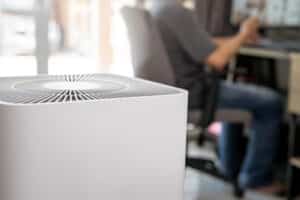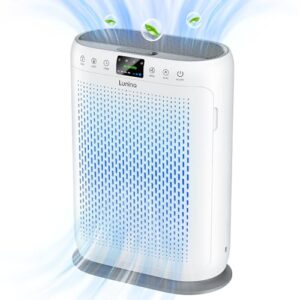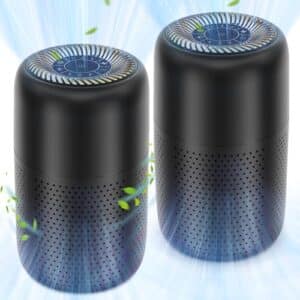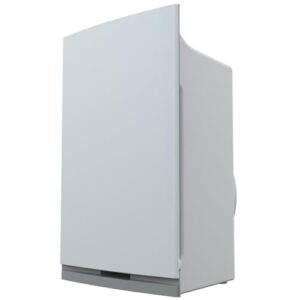Are Air Purifiers Effective in Removing Allergens like Pollen and Dust from the Air?
Key Takeaways
- Air purifiers with High-Efficiency Particulate Air (HEPA) filters are effective in reducing the concentration of indoor allergens like pollen and dust.
- HEPA air purifiers can help alleviate symptoms such as sneezing, coughing, and itchy eyes for individuals affected by pollen allergies.
- While air purifiers may not eliminate all dust mites, they can still help reduce the overall allergen load in the air.
Air purifiers are devices designed to remove pollutants and allergens from the air we breathe. They are commonly used by individuals who suffer from allergies or respiratory conditions to improve indoor air quality. But are air purifiers effective in removing allergens like pollen and dust from the air? Let’s explore the scientific research and expert opinions to find out.
The Scientific Evidence
Scientific studies have shown that air purifiers with High-Efficiency Particulate Air (HEPA) filters can be effective in reducing the concentration of indoor allergens, including pollen and house dust-mite allergens. These filters are designed to capture and trap small particles as small as 0.3 microns in size, which includes most allergens.
According to a research review, HEPA air purifiers have been found to be effective in reducing pollen and other airborne allergens in indoor environments. They can help alleviate symptoms such as sneezing, coughing, and itchy eyes for individuals affected by pollen allergies.
However, it’s important to note that not all research agrees on the effectiveness of air purifiers in removing allergens. One research review concluded that air cleaners have little meaningful effect on dust mite allergens because these allergens often settle on surfaces and are not caught by air purifiers. While air purifiers may not eliminate all dust mites, they can still help reduce the overall allergen load in the air.
Expert Recommendations
When it comes to choosing an air purifier for allergies, it’s important to consider expert recommendations. Here are some top picks recommended by experts:
- Blueair 311i+ Max: This air purifier offers advanced multi-level protection against contaminants and is fast and effective in cleaning the air. (source)
- GermGuardian AirSafe + Intelligent Air Purifier: It provides true HEPA filtration and activated carbon filtering for removing particles and odors. (source)
- Rabbit Air MinusA2 Air Purifier: Known for its sleek design, this air purifier has multiple levels of filtration, including true HEPA and activated carbon filters. (source)
- Honeywell True HEPA Allergen Remover Air Purifier: Available in different sizes, this air purifier uses pre-filter and true HEPA filter to capture allergens. (source)
- Coway 200M Air Purifier: Recommended for smaller residences, this air purifier features a four-stage filtration system. (source)
These air purifiers are known for their effectiveness in removing allergens such as pollen and dust from the air. They offer features like HEPA filters, activated carbon filters, and multiple levels of filtration to ensure the air you breathe is cleaner and healthier.
Additional Expert Recommendations
Other expert recommendations for air purifiers that effectively remove allergens include:
- Levoit Core 400S Smart Air Purifier (source)
- Blueair Blue Pure 411i Max Air Purifier (source)
- Bionaire True HEPA 360 UV Air Purifier (source)
- Aroeve Air Purifier (source)
- Coway Airmega 400S Smart Air Purifier (source)
These air purifiers are recommended for their effectiveness in removing allergens such as dust mites, pet dander, pollen, and mold spores. They also offer features like HEPA filters, odor control, easy use, large coverage areas, and air quality monitoring. By using these air purifiers, individuals with allergies can experience relief from their symptoms and enjoy cleaner indoor air.
Conclusion
Air purifiers, especially those equipped with HEPA filters, have been found to be effective in reducing the concentration of indoor allergens like pollen and dust. While some research suggests that air purifiers may have limited impact on dust mite allergens, they can still help reduce overall allergen levels in the air. The expert-recommended air purifiers mentioned in this article offer advanced filtration systems and features that can effectively remove allergens from the air, providing relief to individuals with allergies.
Related Websites:
FAQs:
Q: How do air purifiers work?
Air purifiers work by using various mechanisms such as HEPA filters, activated carbon filters, and UV-C light to capture and remove particles and pollutants from the air. These devices are designed to improve indoor air quality by trapping allergens, dust, pollen, and other contaminants.
Q: Are air purifiers effective in removing allergens like pollen and dust from the air?
Yes, air purifiers can be very effective in removing allergens like pollen and dust from the air. HEPA filters, in particular, are known for their ability to capture particles as small as 0.3 microns, making them ideal for allergy sufferers.
Q: What factors should I consider when choosing an air purifier for allergens?
When selecting an air purifier for allergen removal, consider factors such as the type of filter used (HEPA filters are recommended), the size of the room you plan to use it in, and the placement of the air purifier. Additionally, look for features like multiple fan speeds and air quality sensors for optimal performance.
Q: Can air purifiers help alleviate allergy symptoms?
Yes, air purifiers can help alleviate allergy symptoms by removing allergens from the air. By reducing the amount of pollen, dust mites, and other triggers in your environment, air purifiers can create a cleaner and healthier indoor space, leading to fewer allergy symptoms.






